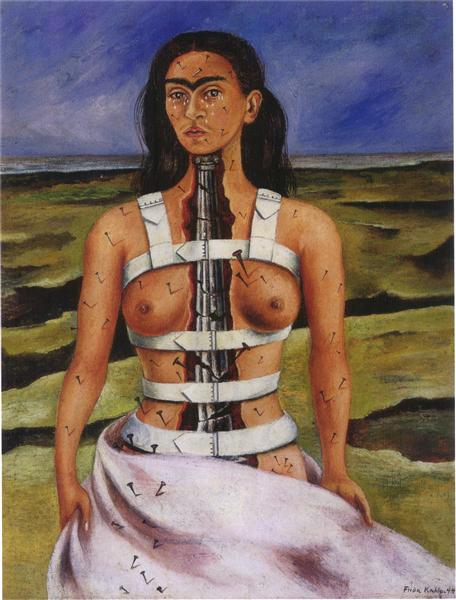Art and Women
Professor Cacioli
Mini post 1
1/17/17
Frida Kahlo is a feminist icon in the visual arts, renowned mostly for her self-portraits. She ignores the male gaze and portrays herself, although surreally, in a completely authentic manner. Her art represents her appearance, perception of self, and mind in an honest way that isn't romanticized, which, as a woman, is revolutionary in itself.
| "Henry Ford Hospital" by Frida Kahlo (1932). Image taken from arthistory.about.com |
 |
| "The Broken Column" by Frida Kahlo (1944). Image taken from wikiart.org |
Similarly, this self-portrait of Kahlo demands attention to the female body in a non-sexual way. Here, she draws attention to her injury. She depicts herself in a body brace that she had to wear after a car accident, and illustrates the damage caused to her spine in aforementioned accident by portraying the vertebrae as a large iron rod with some cracks. She still looks beautiful and womanly (her figure shapely, her hair neat and long, and even covering her lower half with pink fabric) but she feels broken and will not hide it. A distinction in Kahlo's feminism that I identify with is the empowerment she feels by being as much woman as possible, rather than adopting masculine traits or refuting her femininity.
GREAT JOB ! This is perfect.
ReplyDelete